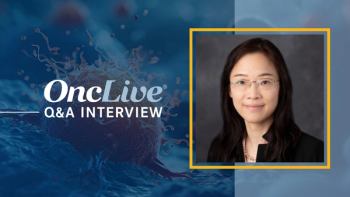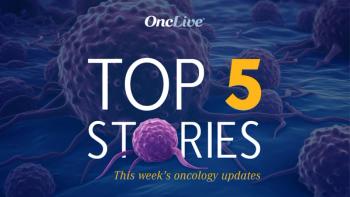
Acquired Resistance in TRK Fusion-Positive Cancers
John L. Marshall, MD: Luis, just to let you have the last word on this, as with many of these agents, resistance is emerging in TRK fusion-positive cancers. Could you talk a little about what’s going on in that space to deal with those people who are progressing on these drugs?
Luis E. Raez, MD: This is a really fascinating story, because as Mark mentioned before, we have broken several paradigms in drug development.
Normally we develop 1 drug, then we wait 3 or 4 years, and then we develop the next 1. This was amazing, and that’s why in 2016 it was not a surprise that they already published the first 2 resistant mutations. For me, it’s very easy to remember, because there’s a road 595 nearby. There is G595, and G667 looked very similar arrangement to a lot of the drugs in development.
But the thing is, the reason we have to give a lot of credit to Alexander Drilon and all these people involved, is that in 2016 we already knew the resistance. To go back a little, when you develop resistance to a drug, the resistance can be on target and it can be off target. In the case of NTRK, the resistance is so far on target, meaning that it is a mutation in the NTRK tyrosine kinase that is caused by amino acid substitution. That originated in the binding of larotrectinib and entrectinib. This mutation essentially it doesn’t happen anymore.
In 2016 they discovered the first 2 resistance mutations in vitro. In 2017 Alex Drilon had a chance to put the first 2 patients who had failed larotrectinib in treatment with the drug LOXO-195, which is now called selitrectinib.
We already have 2 patients treated, 1 with colon cancer who responded for many months and a patient with a salivary gland who was unfortunately a baby. She responded for, I think, 6 to 8 months, and finally developed resistance again. But since that time, LOXO-195, or selitrectinib, is accruing patients who have resistant mutations, and there are several other resistant mutations that have developed.
This is a very similar story with what we have seen through ALK fusions or ROS fusions in developing resistant mutations. We are also really lucky that we have other the drugs. We have 3 compounds more that are in vitro. They have shown that they can rescue patients who have failed. The second is repotrectinib. Repotrectinib is the 1 that was called TPX-0005.
Repotrectinib is effective against ROS2—that’s what we are accruing now nationwide for ROS or NTRK failures. But repotrectinib already has a preliminary report of patients who have responded after they have failed larotrectinib. The other drug is called DS-6051b, from Japan. That’s a drug that in vitro shows benefit, but in vivo there is at least 1 report already—it was a year ago—that a patient with thyroid cancer already has responded.
The last drug is a drug from Ono Pharmaceutical Co, Ltd, that in vitro seems to have some efficacy, but in the clinical arena we haven’t seen any publications yet.
John L. Marshall, MD: It is great to know that these things are on the way and being developed. I was just thinking as you were describing all that, that it requires us to collaborate. No one center can do these centers because of the frequency or the rareness of this mutation and these fusions. It really is encouraging to see everybody working together to get that.
Transcript edited for clarity.

























































































